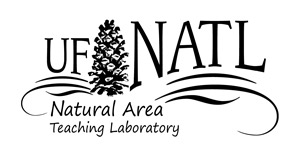| UF Academic Use | Public Use | Family Fun and K-12 Education |

Wetlands Ecosystems
Retention Basin (SEEP)
SEEP pamphlet (18MB Pagemaker file)
The retention basin in the northeast corner of NATL is the site of the Stormwater Ecological Enhancement Project (SEEP). This project has established a variety of fresh water habitats, including a water-treatment forebay, a cypress swamp, a tree island, herbaceous marshes, and permanent pools of open water.
Central Marsh
The central marsh of NATL-east occupies a depression basin that receives water from surrounding areas on campus and private property and from neighboring Archer Road. The central marsh is surrounded by and grades into a shrub wetland/hydric hammock, and, farther upland, a mesic mixed hardwood hammock. The boundaries of these plant communities are not clearly defined and fluctuate depending on rainfall patterns. Water flows from the central marsh via a channel that passes under Surge Area Drive canal and into NATL-west's sinkhole pond.
Sinkhole Pond
A pond in the southeast extreme of NATL-west receives water from the central marsh of NATL-east and drains into the Florida aquifer via a sinkhole immediately to the west. Heavy rains sometimes produce more stormwater than the sinkhole can accommodate in the short term, causing the sinkhole pond to temporarily flood the surrounding area. This flooding closed Surge Area Drive for several days in February 1998 and September 2005.
Ephemeral Pools
Many species of amphibians breed only in temporary, rain-filled pools. After heavy rains, such pools occur naturally in the southeast quadrant of NATL-west. To enhance amphibian breeding in the northern half of NATL, a shallow depression that should occasionally hold water for several weeks or more was excavated in the southwest corner of successional plot D.
Other Resources
Photo Gallery of Wetlands Ecosystem


